Recent Articles
Popular Makes
Body Types
10 Low-Emission Cars with Excellent Greenhouse Gas Scores
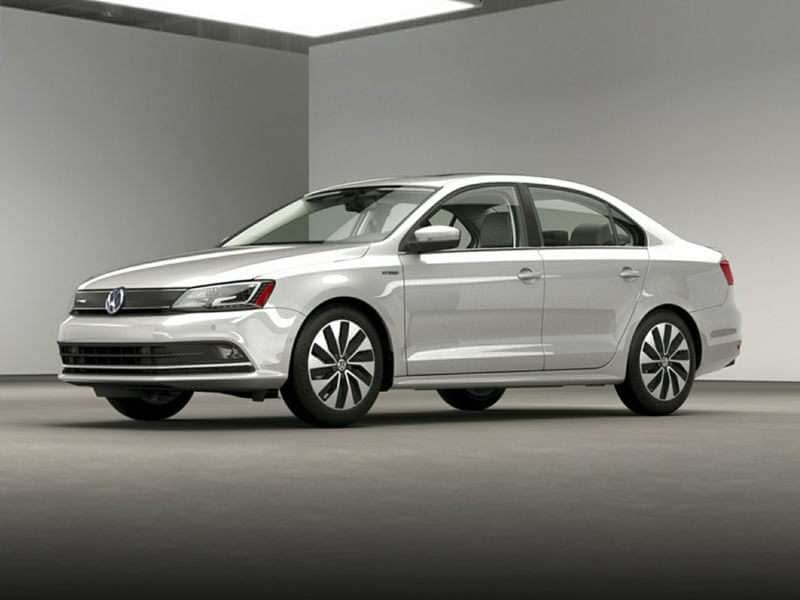
2015 Volkswagen Jetta Hybrid
According to the EPA, “Greenhouse gases from human activities are the most significant driver of observed climate change since the mid-20th century,” so motorists worried about the environment may want to check out these 10 low-emission cars, all of which earned the highest score possible in the EPA’s Greenhouse Gas Ratings.
Now, to be clear, these are not zero-emissions all-electric vehicles, although many do enable a fair amount of EV-style driving, and those selections do create zero tailpipe emissions during that travel; that only changes when their gas-powered range-extenders kick in.
Nonetheless, all the following vehicles do earn EPA Greenhouse Gas Scores of “10” (on a 10-point scale), meaning they emit no more than 200 grams per mile of CO2—responsible for 99 percent of all automotive greenhouse-gas emissions; to put that into context, EPA data from last year show the average passenger vehicle emitting some 411 grams of CO2 per mile.
2015 BMW i3
Yes, the futuristic-looking 2015 BMW i3 is offered with a full all-electric propulsion system, but the brand also provides a version with a tiny two-cylinder gas engine that acts as a range-extender for the car. With that setup, owners enjoy a 72-mile EV driving range as well as an extra 78 miles worth of range using gasoline—just not much of it, as the i3 can achieve 39 mpg in combined travel with that .65-liter powerplant. And more to the point for our purposes, the EPA indicates the i3 is one of the lowest-emission cars in the country, producing just 40 grams of C02 per mile.
Yet since its main motivator is a sophisticated electric motor that makes 170 hp and 184 lb.-ft. of torque, the subcompact-sized car can dash from 0-60 in a semi-BMW-like 7.8 seconds.
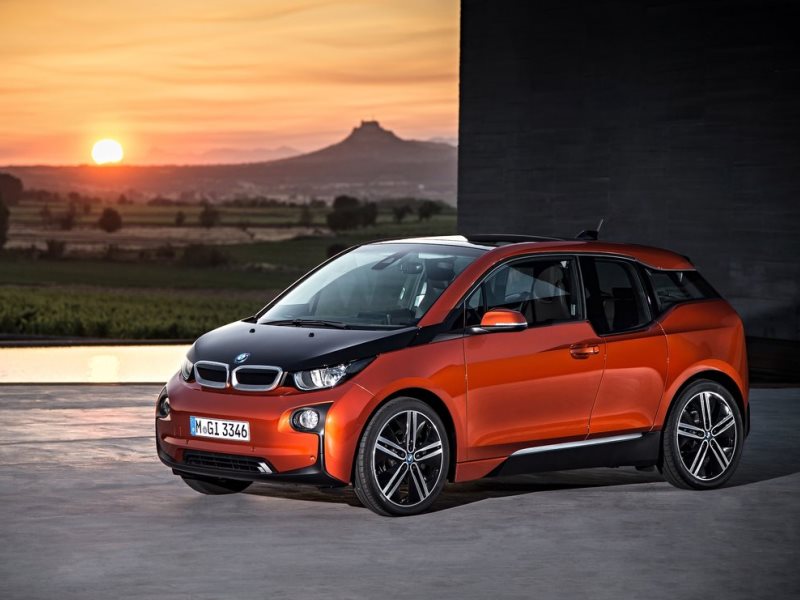
Photo by BMW
2016 Cadillac ELR
Luxury cars with low emissions are relatively hard to find, but Cadillac is making its entry here much easier to purchase: That’s because it will lower the price of the 2016 Cadillac ELR by some $9,000 as compared to the 2015 edition. The new bottom line, taking into account a full $7,500 federal tax credit: $58,495.
The re-priced ELR has been re-engineered a bit, too, and that includes some fine-tuning of its powertrain. In fact, by leveraging an enhanced “Sport” mode, the 2016 ELR sees 25 percent jumps in both horsepower and torque, helping Cadillac reduce its fastest 0-60 time by 1.5 seconds, to a sizzling 6.4 seconds.
Still, the ELR should be able to match its 2015 greenhouse-gas mark of 91 grams of CO2 per mile, combining a 39-mile EV range with a 330-mile overall driving range.
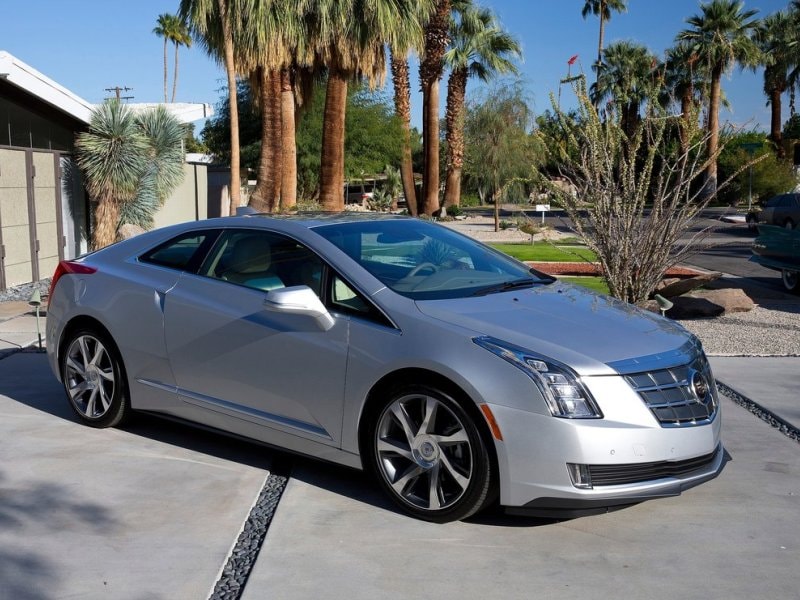
2016 Chevrolet Volt
The all-new second-generation 2016 Chevrolet Volt will showcase an also-new, two-motor drive unit that will be up to 12 percent more efficient than the current one, while also shedding about 100 lbs. of weight. Indeed, the overall curb weight of the 2016 Volt is 243 lbs. below that of the 2015 version.
As a result, the Volt’s EV driving range is expected to increase from 38 miles to 50, its total driving range will grow from 380 miles to more than 400, acceleration will improve, and it should improve on its emissions performance as well, likely lowering its CO2 emissions below the 2015 model’s already low level of 81 grams per mile. After all, the Volt also will welcome a new 1.4-liter range-extending gas engine, projected to provide drivers with up to 41 mpg during highway travel in one of the best cars for low emissions.
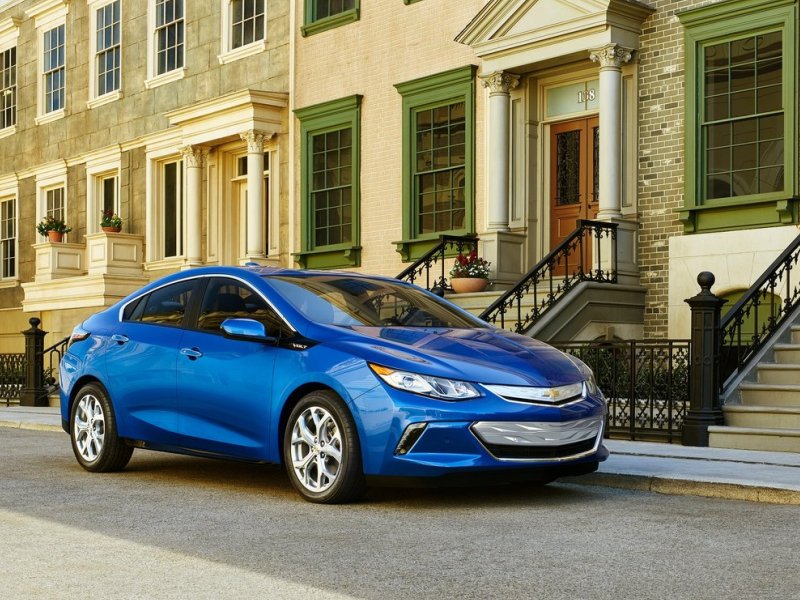
Photo by Chevrolet
2015 Ford C-Max Energi
It’s an unfortunate fact of physics that smaller vehicles tend to dominate among the cars with the lowest emissions ratings, but the 2015 Ford C-Max Energi does its best to buck that trend. True, it’s lithium-ion battery pack does impinge on available cargo space to some extent, yet owners do benefit from up to 42.8 cubic feet of cargo space even then, at least after folding down the rear seats.
Meanwhile, that battery setup is a key to the C-Max Energi’s efficiency performance, working as part of a plug-in powertrain that provides a 20-mile electrically assisted driving range, 550 miles of total range—at 38 mpg combined—and CO2 tailpipe emissions of 129 grams per mile.
For the curious, the standard 2015 Ford C-Max Hybrid received a 9-point Greenhouse Gas Score from the EPA, based primarily on its CO2 emissions rate of 225 grams per mile.
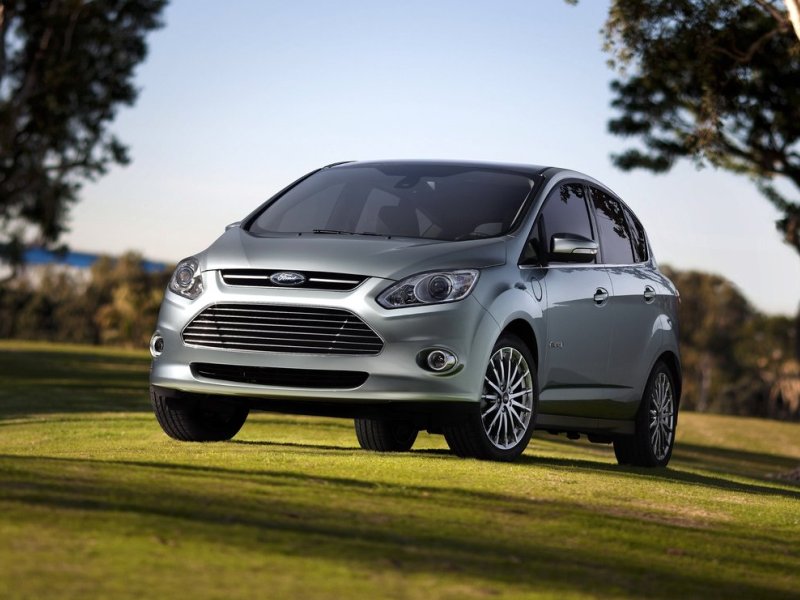
2015 Ford Fusion Energi
Pairing a surprisingly premium package with exceedingly low emissions, the 2015 Ford Fusion Energi is the plug-in hybrid edition of the Blue Oval’s stylish mid-size sedan. As a result, it serves up all of the features that make the gas-engined Fusion so popular, furnishes a fuel-efficiency benchmark of 38 mpg combined while relying on its gasoline-hybrid powertrain, and then adds a zero-emissions all-electric driving range of 19 miles. At the same time, tailpipe CO2 emissions come out to an atmosphere-friendly 129 grams per mile.
The Fusion Energi also has gone further upscale for the 2015 model year, with the range-topping Titanium model gaining new 10-spoke painted-aluminum wheels and a 10-way power-adjustable passenger’s seat, and the full lineup now offering a new Terracotta appearance package, configurable daytime running lamps, additional exterior colors, a six-way powered passenger seat for the SE model and a standard rearview camera.
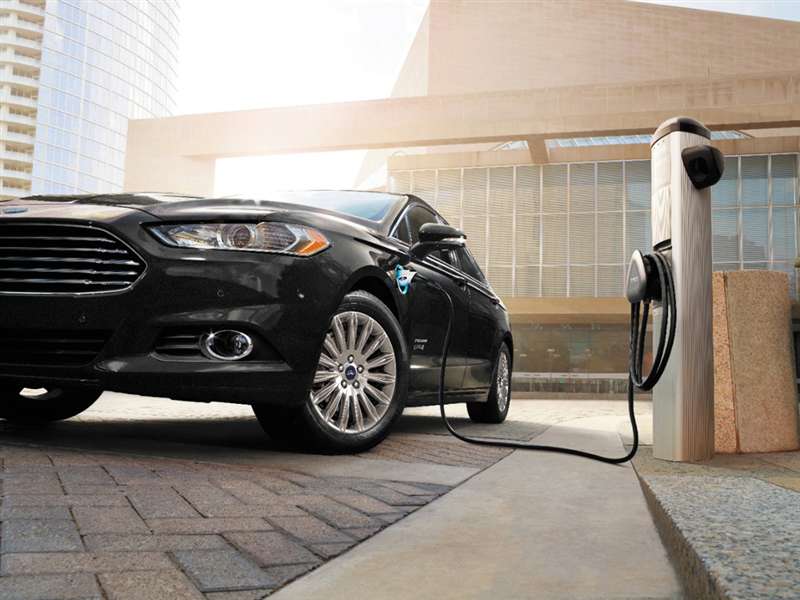
Photo by Ford
2015 Honda Accord Hybrid
Clearly, having a plug-in powertrain helps keep emissions down, but there also are a few low-emission hybrids on the market without plugs, like the 2015 Honda Accord Hybrid.
Backed by Honda’s “Intelligent Multi-Mode Drive” two-motor hybrid technology, along with 196 hp, the Accord Hybrid is both the most fuel-efficient car in its class and the one with the lowest greenhouse-gas emission: Per the EPA, the vehicle is good for 50 mpg city/45 mpg highway/47 mpg combined while producing 188 grams of CO2 per mile.
Honda did offer a plug-in Accord Hybrid for 2014, and continues to offer some for sale, but it’s not clear if a fresher model will appear; which would be too bad, because the plug-in could add a 13-mile EV driving range into the mix even as it lowers CO2 emissions to 130 grams per mile.
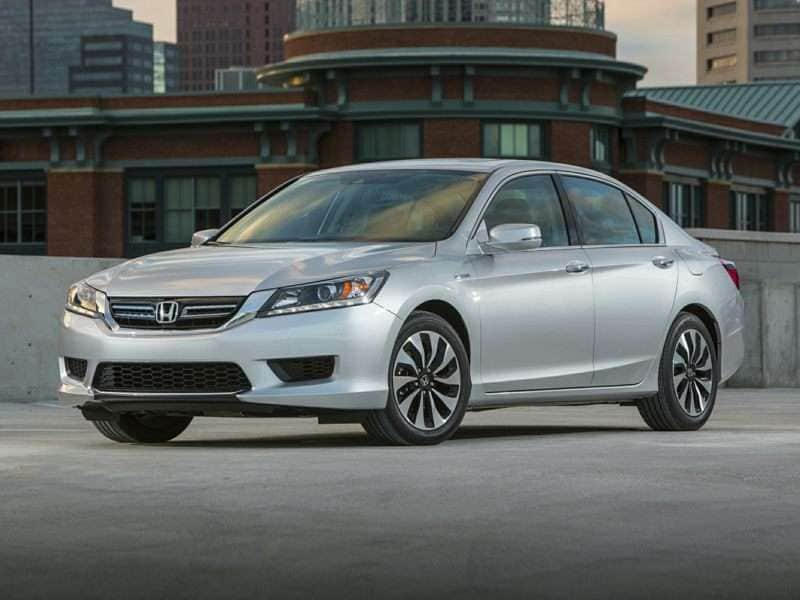
2015 Honda Civic Hybrid
The compact 2015 Honda Civic Hybrid joins its mid-sized Accord sibling among the hybrids with the best emissions ratings, boasting a tailpipe tale of the tape showing 196 grams of CO2 per mile. And that’s in addition to standout fuel-economy grades of 44 mpg city/47 mpg highway/45 mpg combined, as well as peppy outputs of 110 hp and 127 lb.-ft. of torque.
Further, despite its compact footprint—both carbon and otherwise—the Civic Hybrid is well-stocked with standard features, including:
- A rearview camera and Honda LaneWatch technology
- Smart entry with push-button start
- Display audio with a 7-inch touchscreen, six speakers, 160 watts of power and two USB ports
- Bluetooth for hands-free calling and audio streaming
- A multi-function, leather-wrapped steering wheel
- Forward-collision and lane-departure warnings
Honda’s satellite-linked navigation system also is available, as is an upscale cabin environment with leather-trimmed seats and a heated front row.
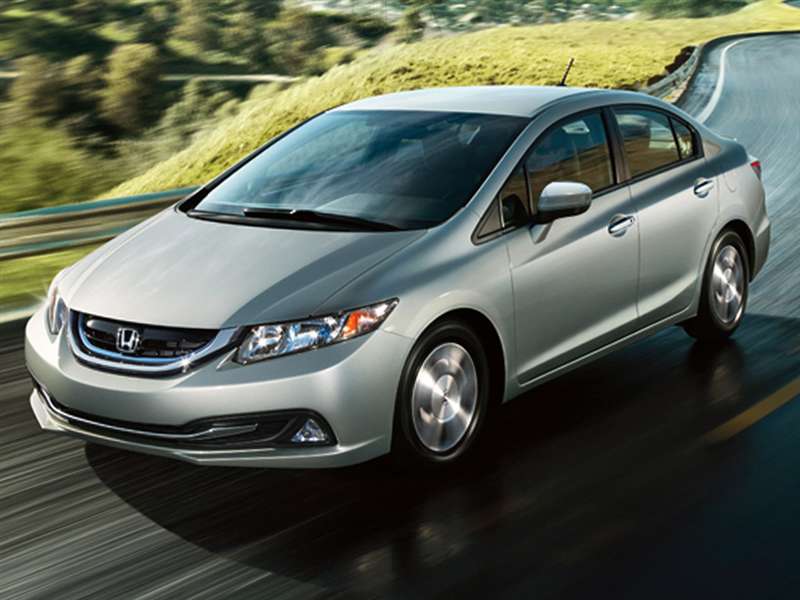
2015 Toyota Prius c
Gently refreshed for the 2015 model year with a revised cabin and LED exterior illumination, the Toyota Prius c is the littlest of the low-emissions cars, but also the most fuel-efficient. Actually, it’s the most fuel-efficient unplugged, gas-powered vehicle of any kind, thanks to an EPA highwater mark of 53 mpg for city driving. But then, it also does just fine in the other facets of EPA testing, with grades of 46 mpg highway/50 mpg combined, and it bolsters those efficiency grades by emitting only 178 grams of CO2 per mile.
The city-sized Prius c also manages to maximize what cabin space it does have, with smart packaging that enables 87.4 cubic feet of passenger volume and a 17.1-cubic-foot cargo hold, complete with more space than the trunk of a typical full-size sedan.
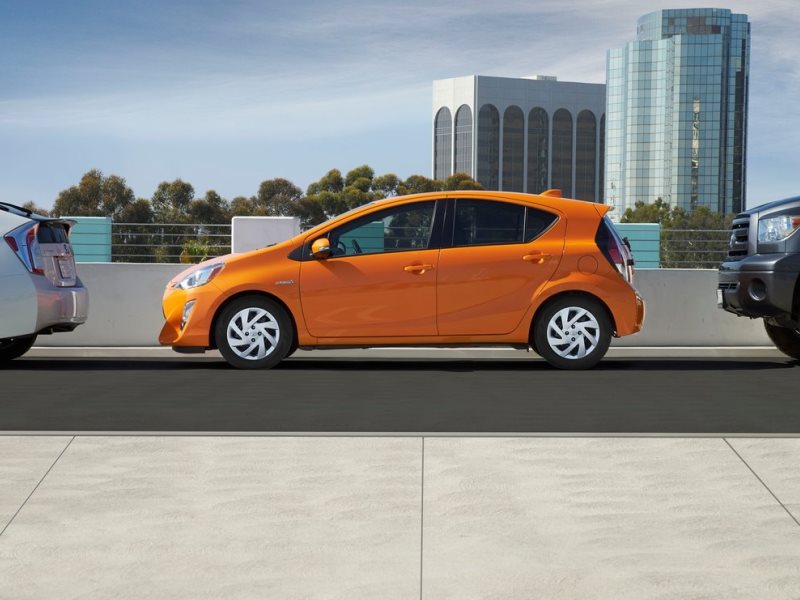
Photo by Toyota
2015 Toyota Prius
Well of course the 2015 Toyota Prius is among the best cars for low emissions, but some folks may have forgotten just how efficient the world’s top-selling hybrid truly is. Consider: It’s still one of just a handful of unplugged vehicles able to reach 50 mpg—see its EPA line of 51 mpg city/48 mpg highway/50 mpg combined—and it achieves that milestone while emitting merely 178 grams of CO2 per mile.
It’s also worth remembering that Toyota sells a plug-in Prius that produces even fewer emissions, and that car delivers the same 50 mpg in combined driving as the “regular” Prius. It also gains a 6-mile EV driving range, an 11-mile electrically assisted driving range and the ability to limited tailpipe CO2 emissions to 133 grams per mile.
Oh, and the lineup as a whole gains a new special-edition Prius designed to honor the car’s 14th year with exclusive appearance upgrades.
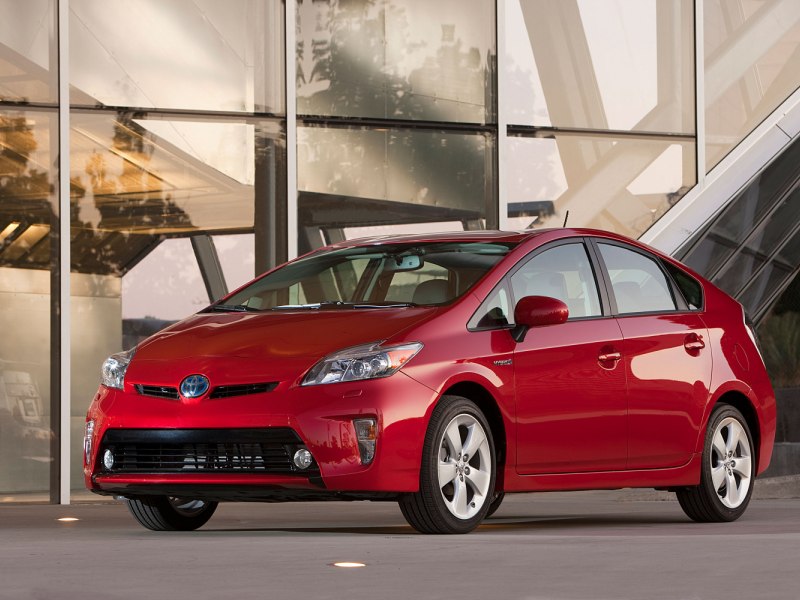
Photo by Toyota
2015 Volkswagen Jetta Hybrid
The 2015 Volkswagen Jetta Hybrid is the sport sedan of the compact-hybrid segment, courtesy of a powertrain that includes a turbocharged four-cylinder engine and the first seven-speed dual-clutch automatic transmission offered by a hybrid in this country. With that gearbox managing a total of 170 hp and 184 lb.-ft. of torque, the Jetta Hybrid also jumps off the line with brisk acceleration, buoyed by a dedicated “Sport” setting for its multi-mode drive selector and a stylish, aerodynamic body kit with a model-specific air dam, side skirts, diffuser and more.
On the other hand, as a leading choice among imported cars with low emissions, the Jetta Hybrid caps off its benefits with an EPA line of 42 mpg city/48 mpg highway/45 mpg combined along with greenhouse-gas emissions right at the 200 grams-per-mile ceiling for 2015 model-year vehicles with 10-point Greenhouse Gas Scores.